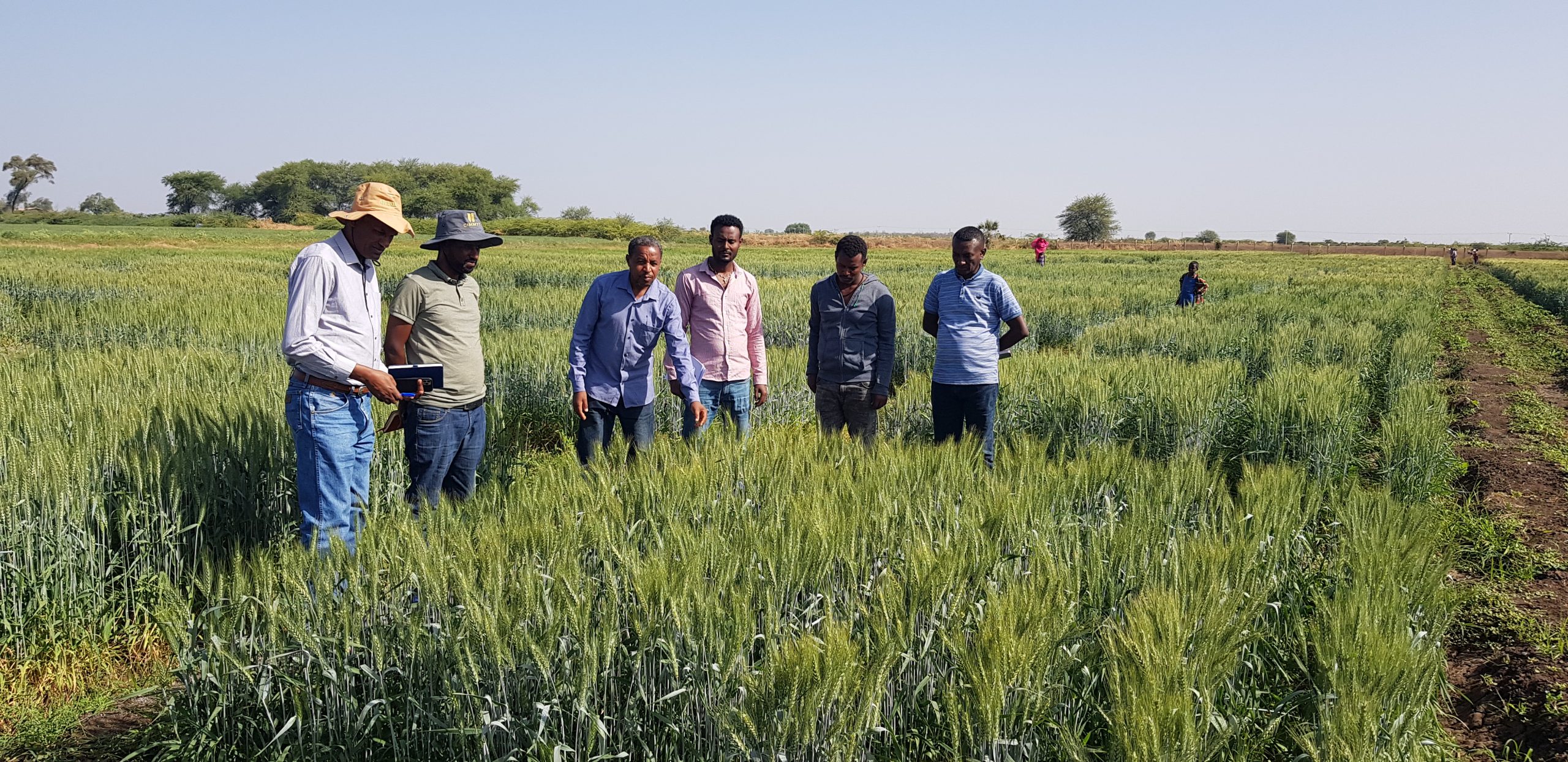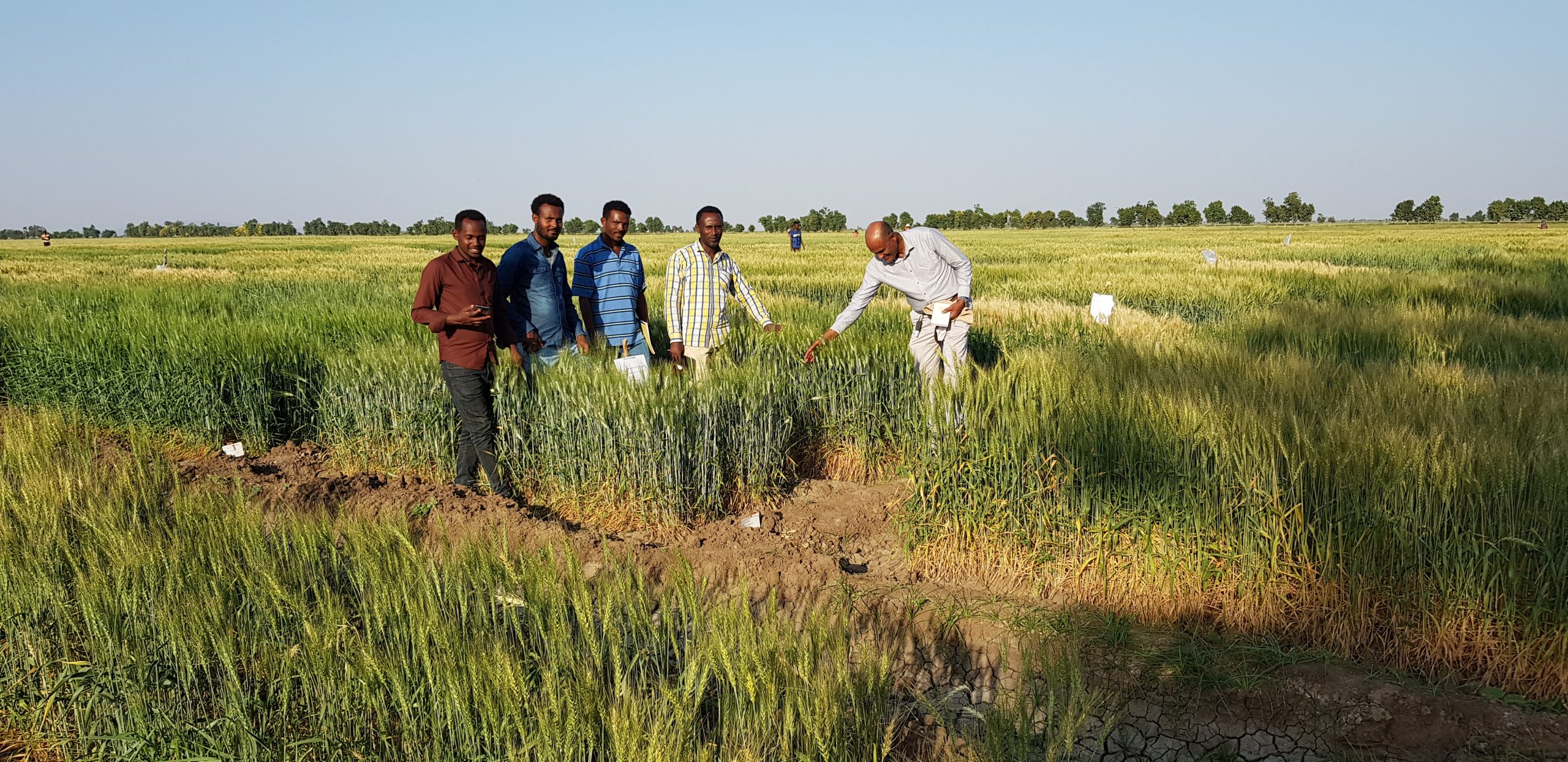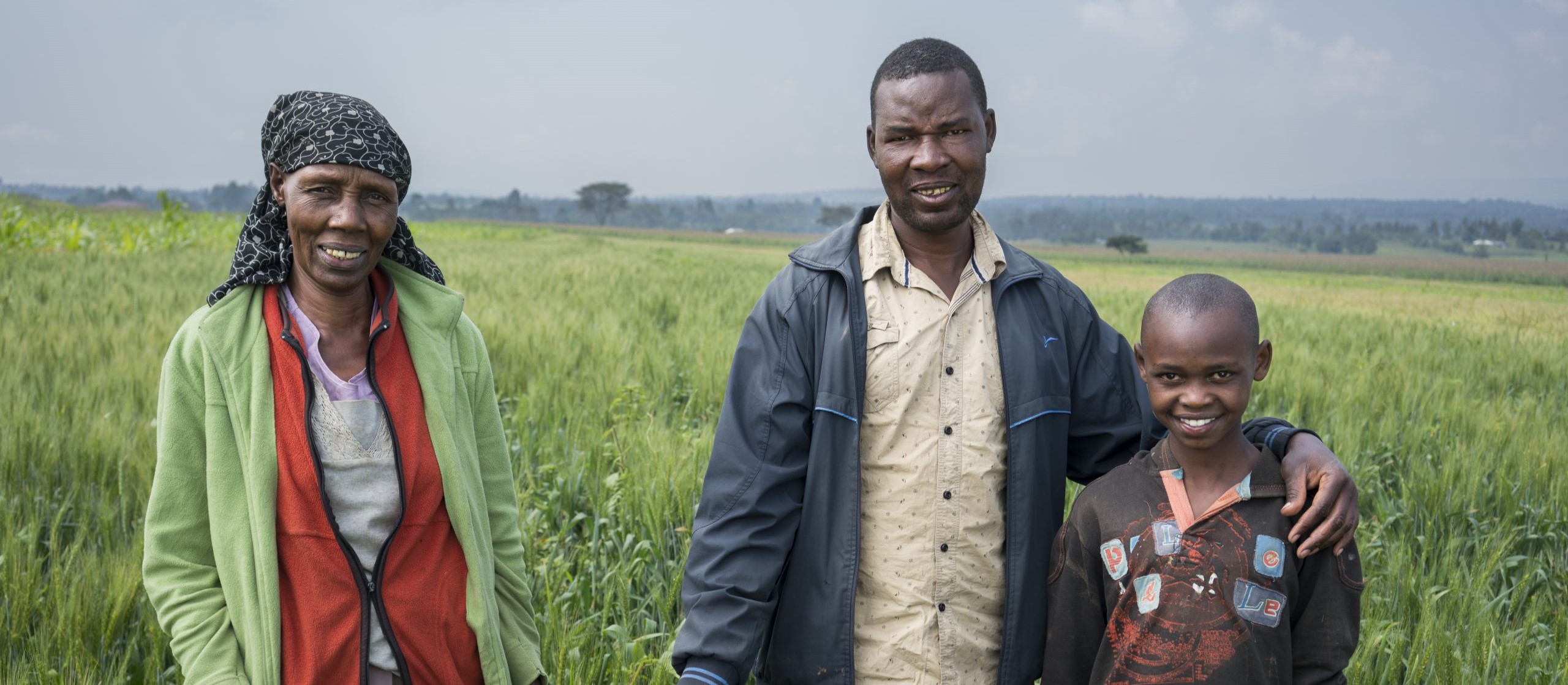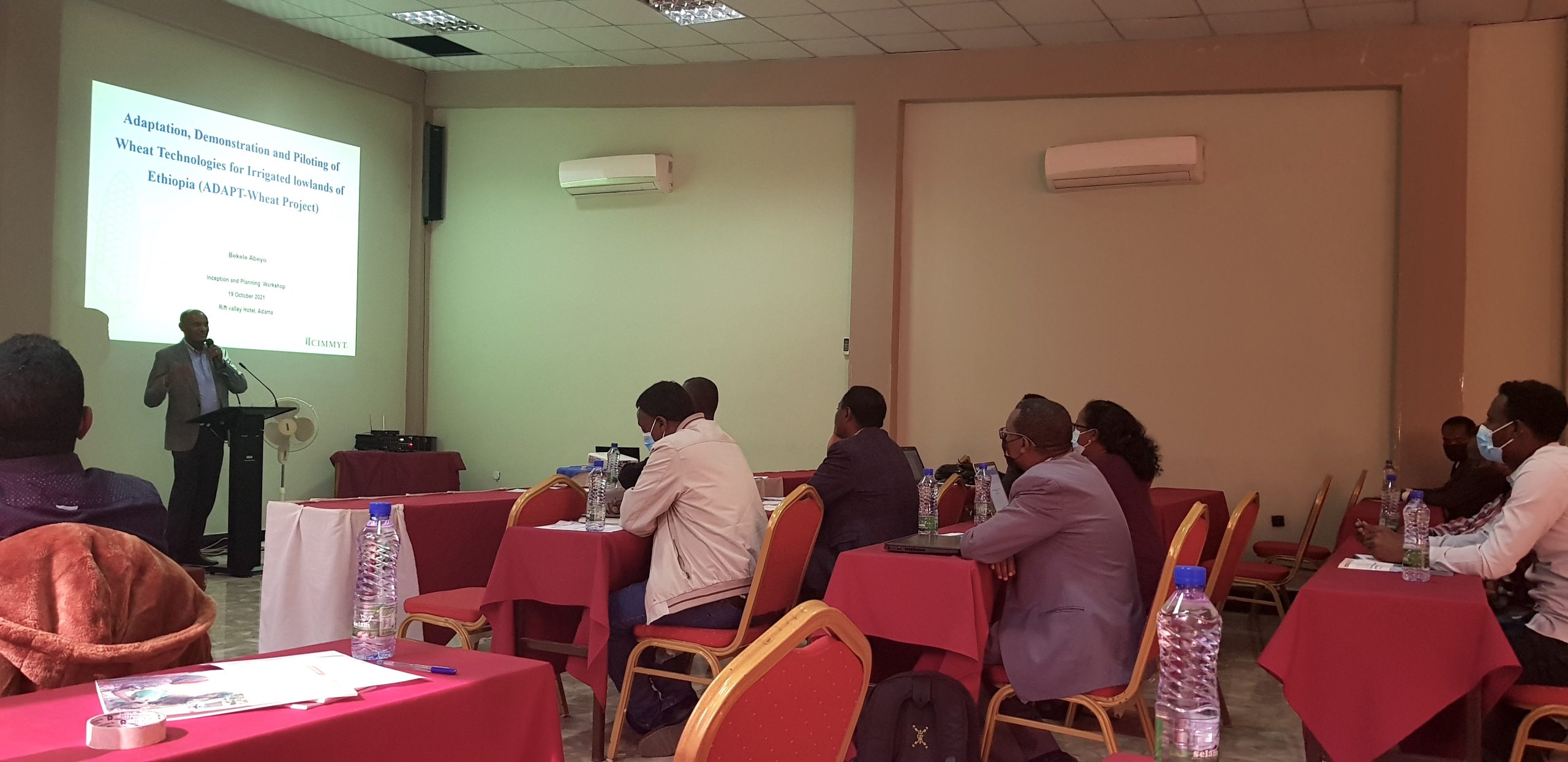Ethiopia is the largest wheat producer in Africa, accounting for around 65% of the total wheat production in sub-Saharan Africa. Despite the old tradition of rainfed wheat cultivation in the highlands, irrigated production in the dry, hot lowlands is a recent practice in the country.
In the irrigated lowlands of Afar and Oromia, situated along the Awash River Basin, CIMMYT and the Ethiopian Institute of Agricultural Research (EIAR) have been supporting small scale farming households to improve yields since 2021. The Adaptation, Demonstration and Piloting of Wheat Technologies for Irrigated Lowlands of Ethiopia (ADAPT-Wheat) project supports research centers to identify new technologies suitable for target planting areas through adaptation and development, which are then released to farmers. Funded by Germany’s Federal Ministry for Economic Development (BMZ) and Deutsche Gesellschaft fuer Internationale Zusammenarbeit (GIZ) GMBH, EIAR leads on implementation while CIMMYT provides technical support and coordination.

So far, several bread and durum wheat varieties and agronomic practices have been recommended for target areas through adaptation and demonstration. The seeds of adapted varieties have been multiplied and distributed to small scale farmers in a cluster approach on seed loan basis.
Cross-continent collaboration
The Werer Agricultural Research Center (WRC) run by EIAR has released two wheat varieties: one bread wheat line (EBW192905) and one durum wheat line (423613), both suitable for agroecology between 300-1700 meters above sea level.
Both varieties were selected from the CIMMYT wheat breeding program at its headquarters in Mexico. The new bread wheat variety exceeded the standard checks by 17% (Gaámabo and Kingbird) and 28% (Mangudo and Werer).
The lines were trialed through multi-location testing in Afar and Oromia, with both lines displaying tolerance to biotic and abiotic stresses. Accelerated seed multiplication of these varieties is in progress using main and off seasons.

“These new varieties will diversify the number of adapted wheat varieties in the lowlands and increase yields under irrigation” said Geremew Awas, a CIMMYT research officer working for the ADAPT project in Ethiopia. Hailu Mengistu, EIAR wheat breeder at WRC, also indicated the need for fast seed delivery of climate resilient wheat varieties on farmers’ hands to realize genetic gain and increase income and food security of the households.
These new varieties will be provided with a local name by breeders to make it easy for farmers and other growers to identify them and will be introduced to farmers through demonstrations and field days. Eligible seed growers who are interested in producing and marketing the basic and certified seeds of these varieties can access early generation seeds from the WRC.

 Capacity development
Capacity development 
